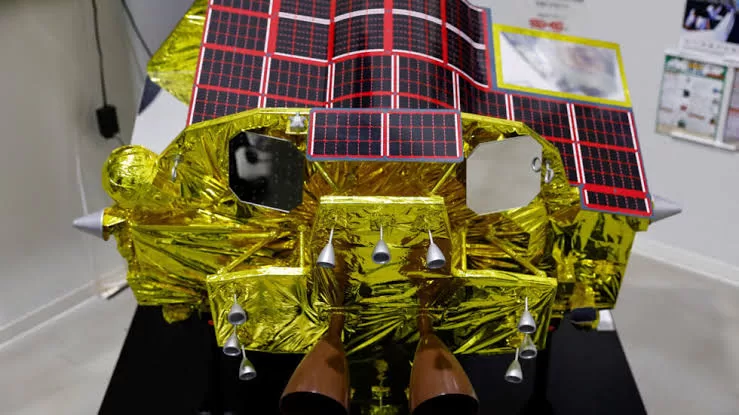Japan’s Successful Lunar Landing
Japan’s robotic SLIM spacecraft has successfully landed on the moon, achieving the remarkable feat of being the fifth nation to softly land on Earth’s nearest neighbor. This accomplishment signals a significant milestone for the Japan Aerospace Exploration Agency (JAXA), as it explores new possibilities for lunar surface access.

Power Hurdles for SLIM
Despite the initial success, a challenge surfaces as SLIM’s solar panels encounter difficulties in generating electricity as planned on the lunar surface. The unforeseen power problem, disclosed by JAXA officials, threatens the probe’s ability to remain operational. The limited battery life supporting moon operations for just a few hours intensifies the urgency to resolve this issue promptly.
SLIM’s Complex Trajectory
Launched last September alongside the X-ray space telescope XRISM, SLIM embarked on a complex trajectory, reaching lunar orbit on Christmas Day. The journey involved intricate orbital maneuvers, including a crucial engine burn, setting the stage for descent-and-landing operations. These operations culminated in the historic landing attempt, which commenced at about 10 a.m. EST and concluded 20 minutes later.
Precision and Setbacks
While SLIM aimed for precision, intending to land within 330 feet of its target site on the Shioli Crater rim, the solar panel issue adds an element of uncertainty to the mission’s success. JAXA officials, cautious in their optimism, anticipate about a month to confirm SLIM’s achieved landing precision.
Small yet Impactful
Beyond its landing achievements, SLIM underscores the potential of small, cost-effective spacecraft in impressive exploration feats. Weighing merely 440 pounds and costing approximately 18 billion yen, SLIM serves as a testament to advancements in space technology.
Scientific Goals and Rovers
SLIM, designed as a landing-tech demonstrator, carries scientific aspirations. It aimed to study Mare Nectaris using an onboard spectrometer during its surface mission, providing valuable insights into the moon’s composition, formation, and evolution. The mission also includes two small rovers, LEV-1 and LEV-2, intended to gather data and capture images. While LEV-1’s functionality has been confirmed, the overall success of these contributions relies on resolving the solar panel challenge.
Conclusion
Japan’s SLIM probe, while achieving a commendable lunar landing, faces the critical task of addressing the solar power challenge. The outcome will determine not only the mission’s success but also its contributions to lunar exploration and scientific understanding.